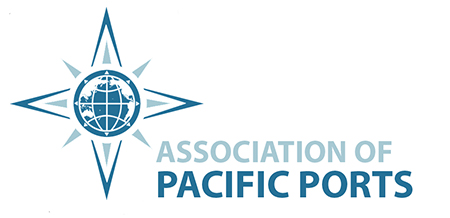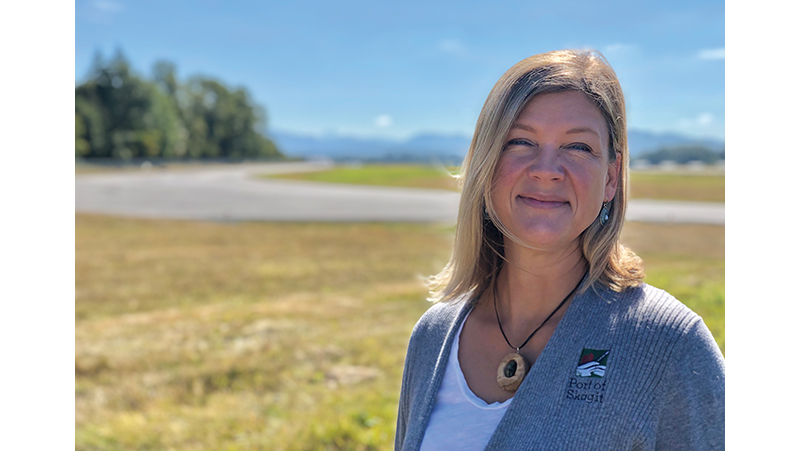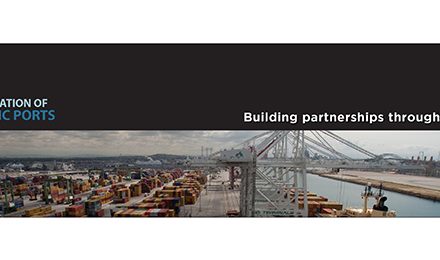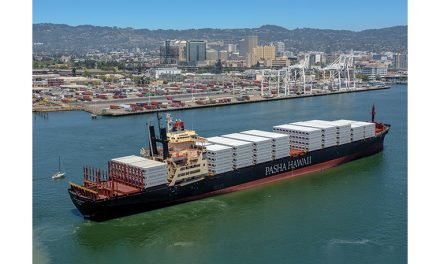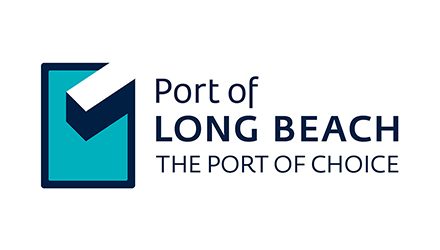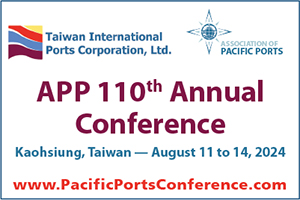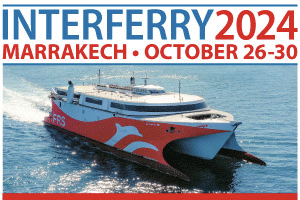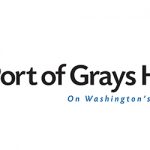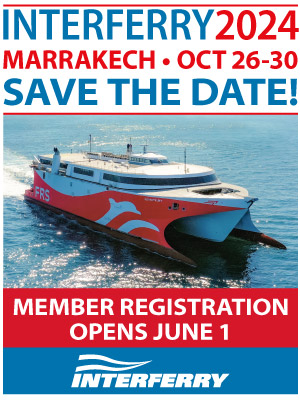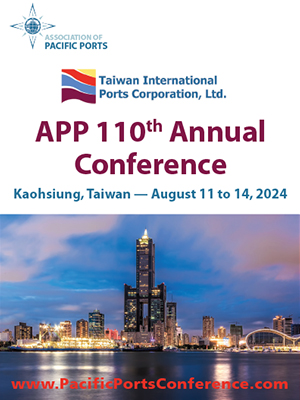There’s one thing that becomes evident very quickly when learning about the Port of Skagit. It is their recognition that their reason for being is to benefit the community — so much so that it is front and center on their website, their mission statement, their vision and their “Port’s Promise”. And “Good Jobs for the Skagit Valley” is more than just a catchphrase for the Port. In our interview with Sara Young, Executive Director at the Port, and in review of current activities and future plans, it’s plain to see that the “Promise” truly reflects the commitment from staff and Commissioners to better the lives of those living in the Skagit Valley.
PP: Let’s start by looking at the transition between yourself and your predecessor, Patsy Martin, as well as the strengths you bring to the role of Executive Director.
SY: Patsy had advised the Commission of her plans for retirement a few years prior to actually setting a date, so discussions about succession had started very early. The Commission had wanted an internal candidate and a seamless transition, so about a year prior to Patsy’s departure, we started operating differently to prepare for it. I started taking on more engagement with the Commissioners, our strategic planning process, as well as staff development. Patsy focused on finishing up projects and wrapping up pieces of external relationships that she had been managing. By the time she walked out the door, we had transitioned all of that and were ready to go. That was at the beginning of September 2021.
I’ve been with the Port for 15 years, so I’ve had the benefit of not only contributing to the mission, but helping to develop the workplan to fulfill teh Commission’s vision. I have worked with the staff and the Commission for many years, and we have a really talented team. We’ve worked very hard to develop a positive work experience for our staff and, as a result, they understand the need to grow together and be productive.
I started my career as a consultant in the area of natural resource sciences and that involved a lot of land use permitting and project management. My experience in those areas has been invaluable and it has taught me how to be resourceful in terms of developing transferable skills as well as critical thinking.
PP: Could you provide some background on the Commission?
SY: We have a really strong Commission. All three Commissioners have deep ties to the community and have been excellent stewards of the Port. Their skills and backgrounds compliment each other quite nicely, bringing their own independent ideas and strengths in a way that is very respectful of the governance structure.
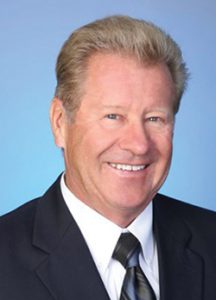
Dr. Kevin Ware
Dr. Kevin Ware was elected in 2001 — I believe he is one of the longest-serving publicly elected officials in Skagit County as well as the longest serving commissioner in the public port system in Washington State. He’s a real asset. In addition to his medical certifications in Family Medicine and the Public Health Service, he has extensive experience in both the marine and aviation sectors and has been actively involved in the business of real estate construction and investment since 1980.
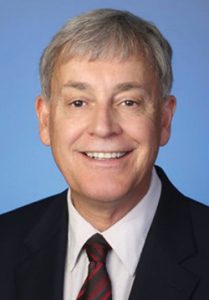
Steve Omdal
Steve Omdal has been a Commissioner since 2012. He has a strong background in business and his experience provides great insights and direction on how best to support Port tenants. He’s very passionate about manufacturing jobs and, having been raised on a dairy and crop farm, really embraces and understands the importance of value-added agriculture in our community. His experience as an engineer with Boeing for 15 years and the hours of commuting each day has given him a great perspective on the need for economic development opportunities in our most rural communities.
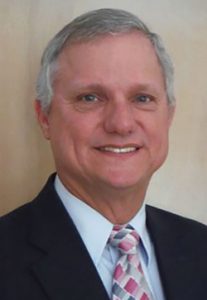
Mahlon Hull
Our newest Commissioner is Mahlon Hull who just took office this past January. He has a broad background in service — both within the Skagit Valley and beyond during his time in the Air Force and Air National Guard — and extensive involvement as a volunteer in the community.
PP: Before we start delving into the activities of the Port, I’d like to spend a minute discussing the Port’s mission statement, specifically, “good jobs for the Skagit Valley”.
SY: The Port has always been focused on job creation for the community but about five years ago we changed our statement from “jobs” to “good jobs” to capture the idea that we’re not just after any job. We wanted to convey the concept of sustainable community wage jobs.
We thought about the terms “living wage” and “family wage” but felt they were too subjective so we did a study and found that a combined income of $85,000 per year would satisfy the need to break even in terms of taxes returned to the community to support the services that an average family requires.
PP: In this context, let’s go through the various activities throughout the Port, starting with your real estate portfolio.
SY: We have several port-owned properties throughout the county and there are industrial properties for lease on all of these — La Conner Marina and RV Park, Skagit Regional Airport, the SWIFT Center, Bayview Business Park, and Watershed Business Park. In total, we own about 2,500 acres.
Watershed Business Park is our most recent acquisition. It is 123 acres of industrial property located just east of the airport. This summer, we’ll start installing the basic infrastructure to allow for businesses to locate there. It’s a very flat property that is a good compliment to our existing Bayview Business Park which has a lot of wetlands, so it is sub-divided into smaller plots — typically less than two or three acres — to be able to preserve the highest functioning wetlands. The Watershed Park, which is dry, will have lots significantly larger, between five and 10 acres. This gives us a lot more diversity in the kinds of businesses we can accommodate — for example, agriculture processing facilities among other possibilities. The Bayview site has aerospace and marine manufacturing as well as the construction trades — any one of those core industry sectors would be suitable for our new site.
We also have an old railyard property and we’re working on a sale proposal. Given its proximity to the I-5 Highway and the existing rail infrastructure, there’s a number of companies interested in it. The Commission is interested in selling the property and reinvesting the funds in the community for initiatives related to value-added agriculture, perhaps a transload facility. We could potentially use this site for transload but ideally, we would want to find something closer to our core.
PP: During the APP Conference in San Diego last October, Dr. Ware made a presentation and mentioned how value-added agriculture was a real benefit to the Skagit Valley and a significant focus for the Port. Could you provide more detail on that sector?
SY: I believe Commissioner Ware used the example of farmers who had originally planted a commodity grain between the growing seasons of tulips and potatoes and were now growing grain for a specialty market, specifically malting grains for brewers and bakers, which commands a much higher price per bushel. We have two buildings and one large grain storage tank farm under lease for malting grains. We have another building with multiple tenants, including a pickle processor. This also houses a King Arthur Baking School classroom of which there are only two in the world. And we have three breweries who use local products. We also just finished construction of a co-op project for local farmers. There are roughly 80 small ranching operations spread over five counties, and this provides a local venue for them. It includes a meat processing facility.
PP: Let’s look at the SWIFT Center next. What are your plans for this site?
YS: The SWIFT Center is a long-term project which requires generational decisions. We took ownership of the site from the State of Washington in July 2018. It was a former hospital dating back to 1912 so it has a very rich history and a unique Spanish colonial style that needs to be preserved.
The first target is to get infrastructure built in a vacant swath of property at the lower perimeter. We’re looking at four large industrial buildings of 50,000 square feet each. The Port would undertake the base infrastructure and site prep and then have private partners build according to the architectural standards of the property. We’re hoping construction will start sometime in the next year.
Beyond that, we’re working on a feasibility study to understand the costs around renovating some of the more historic buildings and what kind of partner it might take to make it happen. Some of the ideas include tech businesses or even residential buildings. There has been quite a bit of interest in providing housing given the shortage of worker housing which is affecting local employment. The idea that there could be a component of the SWIFT Center for some kind of residential or mixed-use development is really compelling.
The feasibility study will be completed this year and will provide us with some guidance as we move forward but as I mentioned, this is a generational project and will likely be upwards of a 20-year horizon for completion.
PP: Turning to the La Conner Marina, I understand there are plans for that area as well.
YS: Yes, the Marina is on the cusp of a new life. It’s over 50 years old now and is very land constrained. It supports a critical marine manufacturing cluster and it’s important to provide opportunities for growth of that. For example, last May, we completed a new 17,266 square-foot Port-owned manufacturing facility for Mavrik Marine. The new expansion will add between 25 and 30 jobs and there is the potential for them to require another, similar building in the next five to 10 years.
One of the issues that we’re currently trying to address is the need for a large boat launch for our north-end industrial tenants. Also, there is an old sling launch that is at the end of its life and needs to be demolished. We could renovate that property for a boat ramp, but we would need to provide enough public parking to utilize the ramp, so there is a master planning effort underway to determine the best path forward.
The big news for the marina property, however, is the potential for significant redevelopment of our uplands. We just kicked off a planning process to investigate options, including the potential to partner with a private company for the redevelopment of some old buildings into a mixed-use area that could include residential housing. We’ve had conversations with the town of La Conner and there’s a lot of excitement about the potential to turn the area from seasonal and tourism-dependent activity to having a core residential community.
PP: I believe that brings us to the last remaining enterprise, the Skagit Regional Airport.
YS: Between the Port, Washington State, and the Federal Aviation Administration, about $20 million worth of investments has gone into the Airport over the last 10 years. The result is that it is now completely up to standard for larger, transcontinental business jets. We are now able to accommodate any size of business or recreational aircraft. We’ve avoided offering commercial services as it would mean a different set of regulations and would become more difficult for business and recreational aviation to share the same space.
Within that $20 million is more development and private investment. For example, our FBO (fixed-base operator) has expanded their facilities significantly. They have two new hangars and can park any size of aircraft that comes to the airport. We’re also about to break ground on two more hangars that are both 150 x 100 feet with 15,000 square feet each. And three private, large aircraft hangars are going up — two on the north ramp and one on the east apron. We had a set of 10 T hangars constructed last year by a private entity as well as 20 new T hangar units between the two buildings for smaller aircraft. There is also another project going to the Commission for approval — two 60 x 60-foot executive hangars.
Our next big project will be getting a runway extension which will be a big benefit for larger aircraft. The FAA is a great partner and will pay for 90 percent once we have our operational numbers at that critical threshold of 500 operations annually.
PP: Aside from the extensive portfolio you manage, could we also discuss some of the initiatives you’re undertaking? I’m thinking specifically about the broadband fiber optic.
SY: We started in 2018 and formed SkagitNet LLC, a joint partnership with the Skagit Public Utility District. The goal is to connect the most rural areas with urban areas and create equity in terms of service and pricing. We have been awarded $12 million in state and local funding in addition to our own funding, and we continue to look for more to keep building. Our original goal was to build a west-to-east backbone — and we’re about to construct the last phase of that — but we’ve moved the target for ourselves and are now designing and permitting a project to connect the Sauk-Siuattle Tribe with the goal to create a redundant ring to Snohomish County. We’ve also started looking at additional areas to ensure there are no gaps.
We lease the infrastructure (i.e., the fiber optic cable) to service providers on an open access basis to create competition in these rural markets. Our goal is to achieve a break-even venture, but the real benefit is the good that it does for the community.
PP: What about environmental programs?
SY: We’re always aware of doing our work in a way that’s environmentally friendly and we’ve been lucky that we don’t have the burden of redeveloping a waterfront that has had a history of contamination. Our environmental work can be categorized in two ways. The first is energy conservation. That translates into prioritizing the installation of solar panels for all new projects and building charging stations for electric vehicles on all of our properties.
The second relates to land use, specifically, wetlands and storm water management. We just completed a 20-year program to manage wetlands on our property in partnership with the U.S. Army Corp of Engineers and other resource agencies and stakeholders. It was a great program that allowed us to preserve the best wetlands, develop a small amount of low-functioning wetlands, and resolve conflict between development and the environment.
We’re now embarking on the second generation of that program. We’re renegotiating a new permit cycle so we can implement new mitigation measures and take a fresh look at the wetlands on our property. Our goal is to always try to manage the wetlands as comprehensively as possible rather than a a piecemeal approach.
Stormwater is another area of focus. We’re doing testing right now to see if we can infiltrate storm water into a deep sub-surface strata. On Bayview Ridge, the conventional thinking is that it’s not practical to infiltrate stormwater because we have a couple of feet of topsoil overlying thick clay that shunts the water off. We have been told for years that we can’t do low-impact development at Bayview, but a local company has investigated and found that below the clay layer is a thick layer of sand. If we can tap into that, we might be able to infiltrate with an 80-foot well.
PP: Last question: How did the Port fare during the pandemic?
SY: When it first started, business crashed fairly quickly but since then it has come back with great force. For example, we saw a lot of cancellations at the Marina in March 2020 but by June, people started realizing that boating was the one activity they could do safely, and we ended up having the longest season we’ve ever had. Each year since has seen an earlier start to the boating season and now, we’re not just back to normal — we’re seeing much stronger demand. We’re hoping this will be sustained in the years ahead.
Another issue that is in some ways related to the pandemic is the labor shortage. We’re having a hard time finding talent for some of the positions we have open — for example, our Chief Finance Officer has announced plans to retire. But we are an attractive place to work — we have a lot of benefits to offer.
PP: Thanks Sara!
About the Port of Skagit
Conveniently located in Northwest Washington’s fertile Skagit Valley, found midway between the metropolitan areas of Seattle, Washington, and Vancouver, British Columbia, the Port of Skagit owns and operates four key facilities: the Skagit Regional Airport, the Bayview Business Park, the La Conner Marina and the SWIFT Center in Sedro-Woolley. Combined, the Port’s four facilities are home to more than 100 businesses that employ some 1,800 workers in sustainable household wage jobs, and there’s still plenty of room to grow.
- At a glance
Skagit Regional Airport — The primary runway is oriented in a northwest-southeast direction; paved and lighted with a full-length parallel taxiway; published dimensions are 5,477 feet long by 100 feet wide. The secondary runway is oriented northeast-southwest; paved and lighted with a full-length taxiway running alongside; published dimensions are 3,000 feet long by 60 feet wide. US Customs & Border Protection Services available for international arrivals, 24 hours a day. - La Conner Marina — Two marina basins on the east shore of the Swinomish Channel, open all year; 2,400 linear feet of guest moorage; 366 covered berths; 130 open berths; approximately 100 dry boat berths (dry storage). RV Park with 60+ camping sites.
- Bayview Business Park — Uniquely positioned in northwest Washington, about halfway between Seattle and Vancouver, British Columbia.Tenants are surrounded by 1,000 acres of forested industrial property.Primary industries at the Bayview Business Park include aerospace, maritime and general manufacturing. The business park is also home to a value-added agriculture cluster of complementary ag businesses and industries.
- SWIFT Center — Historic former Northern State Hospital campus in Sedro-Woolley. The Port and partners are leading efforts to revitalize the campus to focus on economic development in eastern Skagit County, with the vision of a center for innovation and technology.
For more information, visit: www.portofskagit.com
